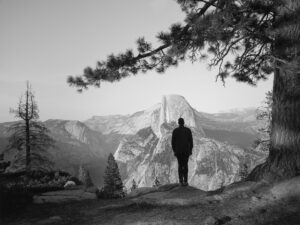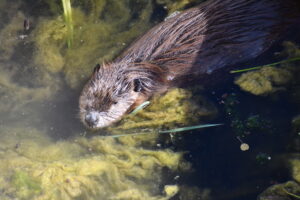Lee Van Der Bokke is a world-class geocacher – someone who hides, and searches for, “caches”—hidden containers of different sizes that are tagged and located using GPS (global positioning system) or mobile devices.
These caches—which can contain anything from a simple notepad, to clues to other caches, to toys and trinkets for children to trade – are hidden in a wide variety of places all around the world, from dumpsters to remote ridge tops. They have turned out to be a way of luring all kinds of people, from toddlers to retired airline pilots, out into the natural world.
Now retired, Van Der Bokke spends half his time seeking out caches and has located some 64,000 of them in the past 10 years. We met up with him recently at Waterbird Regional Preserve in Martinez to learn more about his caching passion.
BN: What is the most beautiful spot that geocaching has brought you to in the Bay Area?
LV: I’ve been every place in the Bay Area that you can possibly go. Geocaching gets me out of the house. I’ve been to some very great spots, and some not great spots, like a dumpster in Dublin. There are caches up trees, in caves, in the space station… It’s a great excuse to get out and explore all the parks. Let’s say somebody puts a new cache up in a park, at first I might think, “Oh, no, I don’t want to go up there again.” But then I do – to get the cache. So I’ve been to every one of the East Bay Regional Parks. There’s even an East Bay Regional Park challenge, where you have to find 50 caches in the park system.
BN: So the EBRPD endorses geocaching?
LV: The East Bay Regional Park District tolerates geocaching. When I started, there was a mandate against caches, and several of the parks actively removed them. But in the last year or so, they’ve put some rules in place, rules that make sense: You can’t go marching off trail; if you see animals, keep a certain distance; don’t damage the environment; and so on.
BN: Tell me more about “earth caches”; they sound like they’d be of particular interest to Bay Nature readers. .
LV: There’s one on Angel Island – called the “Serpent of Angel Island” – which teaches the seeker about serpentine rocks and other aspects of Angel Island’s natural history. There are also ones on Alcatraz including “The Rock” that talks about turbidity flows and greywacke; several in the Marin headlands; one on Ring Mountain, “Turtle Rock”, which talks about the color and composition of the rocks in the hill; several along Grizzly Peak in the East Bay Hills, including the poetically named “Rosemary, thyme, basalt, sanidine, and rhyolite”; and several scattered through the South Bay, including the intriguingly named “Tilt-A-Whirl: Saw Tooth Canyon”, about sandstone and shale formations to the east of Mt. Hamilton. With these, instead of locating a physical cache, seekers are supposed to find a specific geologic or historical site, and submit a photograph of themselves there, along with answers to some questions, to the cache’s “owner”.
BN: How does somebody get started in geocaching?
LV: Log on to geocaching.com. There are many ways into the game, either with a GPS device or the ten-dollar geocaching app. The easiest way to start is with that app on the iPhone.

.jpg)
.jpg)



